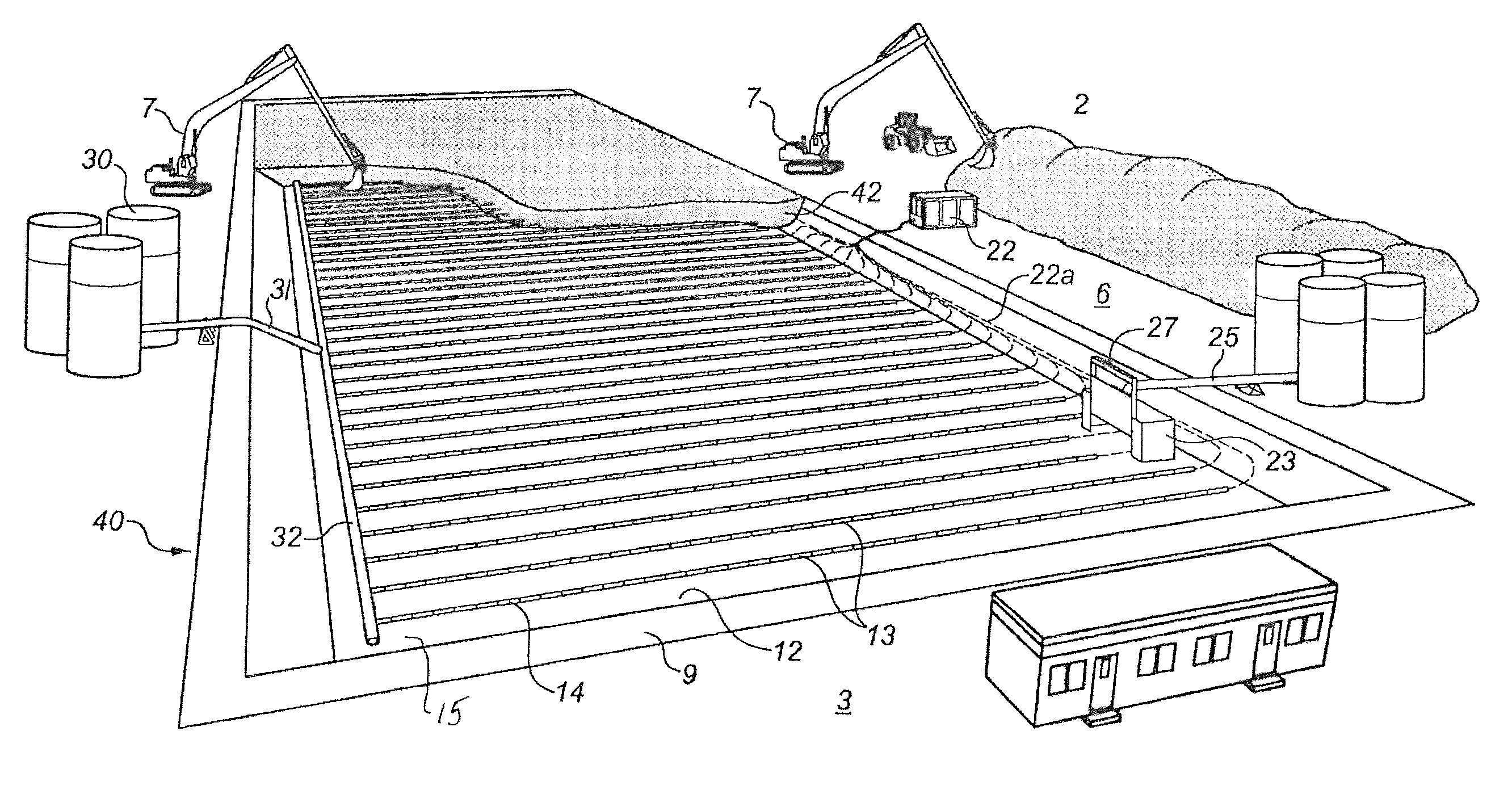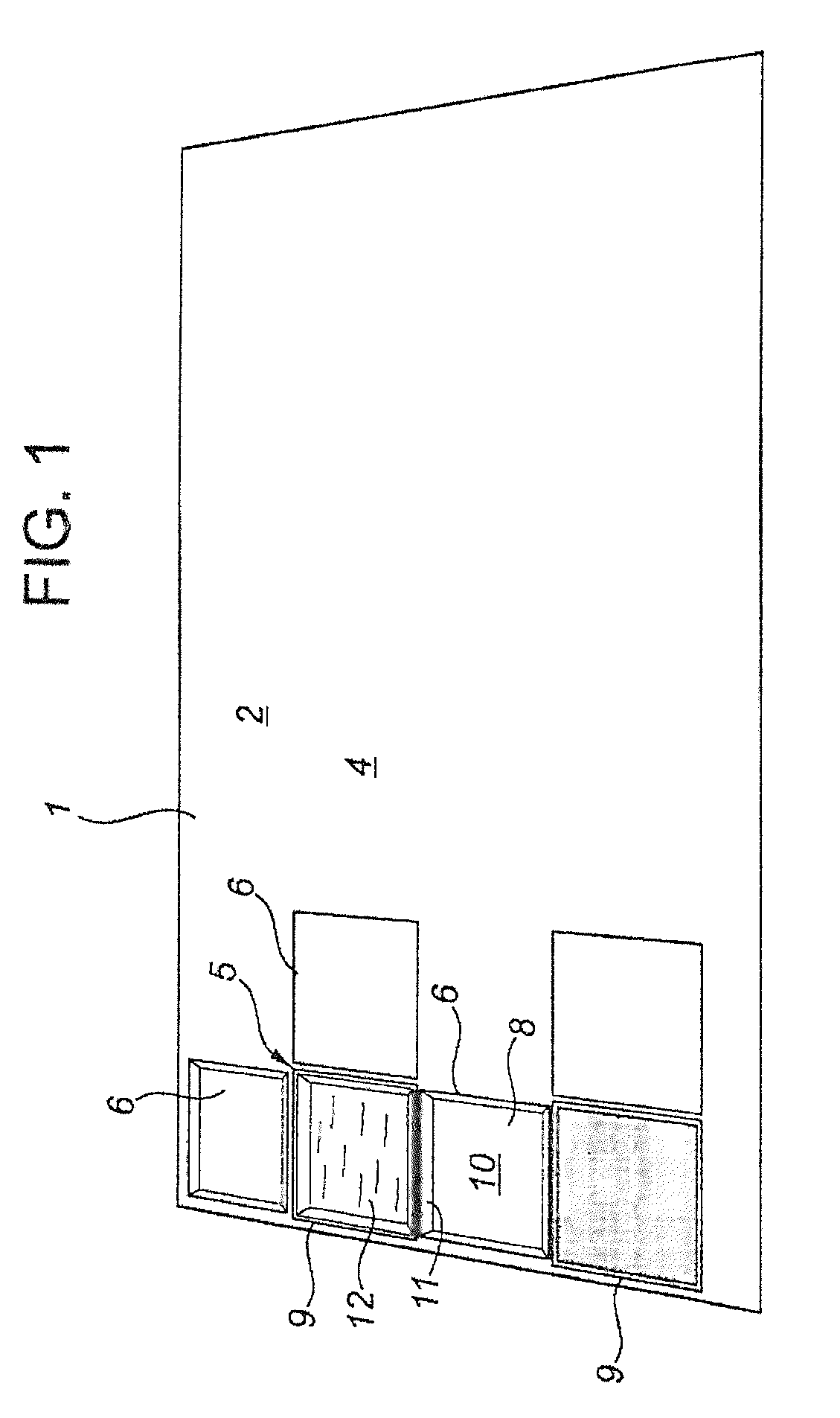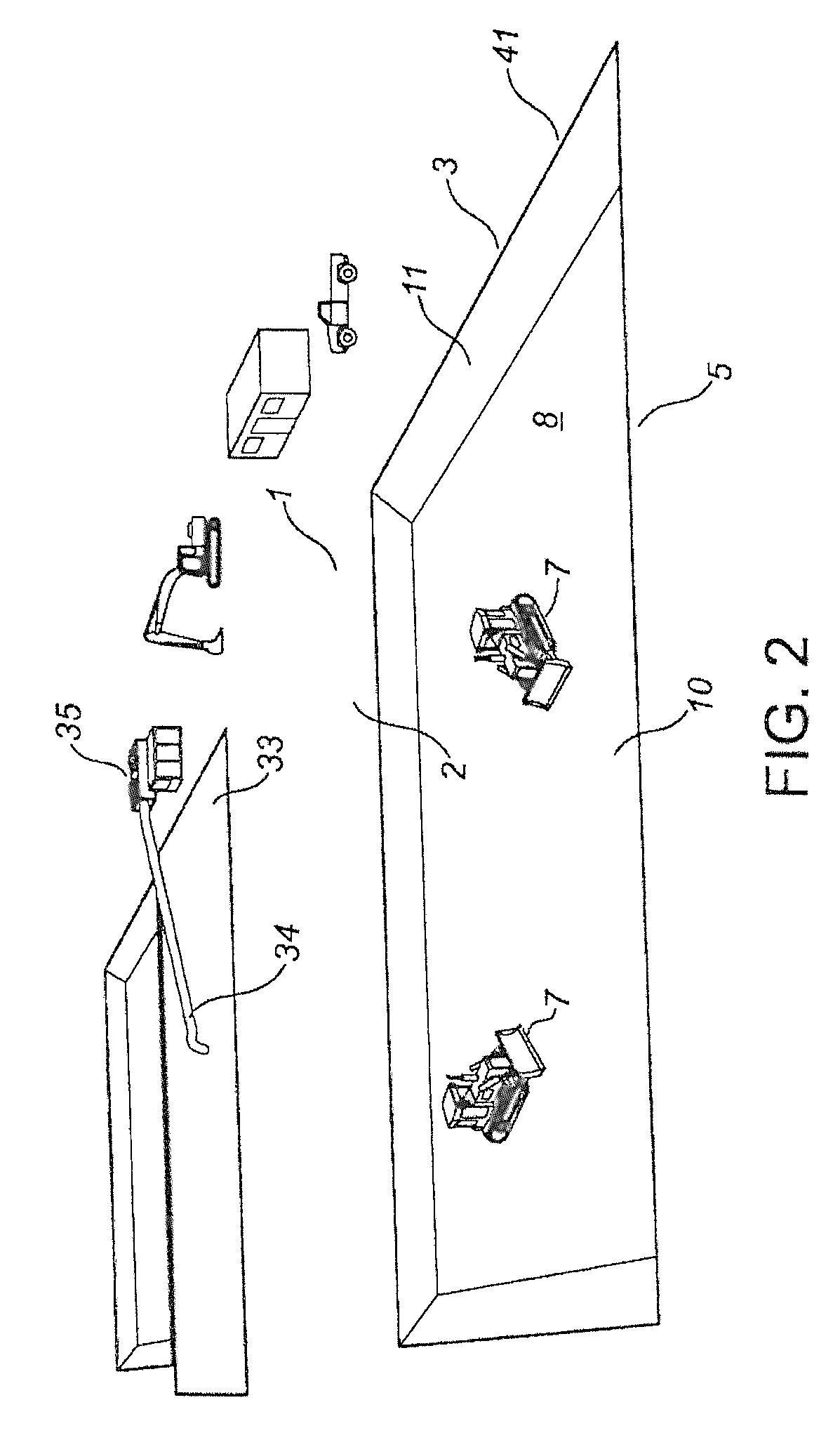Method for the remediation of contaminated soil
a technology for contaminated soil and remediation methods, applied in the direction of combustion process, protective foundation, lighting and heating apparatus, etc., can solve the problems of leaking liquid, affecting the quality of soil,
- Summary
- Abstract
- Description
- Claims
- Application Information
AI Technical Summary
Benefits of technology
Problems solved by technology
Method used
Image
Examples
Embodiment Construction
[0040]The method will be described in connection with remediating a surface layer 1 of oil-contaminated sand 2, such as exists in Kuwait. The sand 2 is unconsolidated, porous and permeable. It typically comprises 34 wt. % oil, 64 wt. % sand and 1 or 2 wt. % salt. The contamination commonly extends down from ground surface 3 to a depth of about 10 feet.
[0041]As shown in FIG. 1, a tract 4 is sub-divided into a central area 5 and surrounding adjacent areas 6. The areas 5, 6 may be rectangular in configuration and substantially contiguous. For instance, each area may be about 200 meters in length and 50 meters in width.
[0042]The width may be selected so that excavators 7 (see FIG. 3), positioned on each side edge of a pit area, can extend their buckets to about the centerline of the pit to be excavated.
[0043]As shown in FIG. 2, in a first step of the process, machines 7, such as excavators, bulldozers, loaders and trucks, are used to excavate the oil-contaminated sand 2 from the central...
PUM
 Login to View More
Login to View More Abstract
Description
Claims
Application Information
 Login to View More
Login to View More - R&D
- Intellectual Property
- Life Sciences
- Materials
- Tech Scout
- Unparalleled Data Quality
- Higher Quality Content
- 60% Fewer Hallucinations
Browse by: Latest US Patents, China's latest patents, Technical Efficacy Thesaurus, Application Domain, Technology Topic, Popular Technical Reports.
© 2025 PatSnap. All rights reserved.Legal|Privacy policy|Modern Slavery Act Transparency Statement|Sitemap|About US| Contact US: help@patsnap.com



